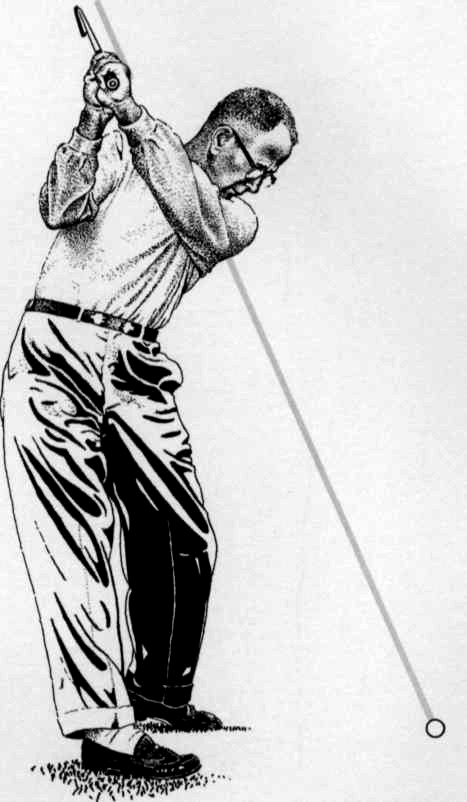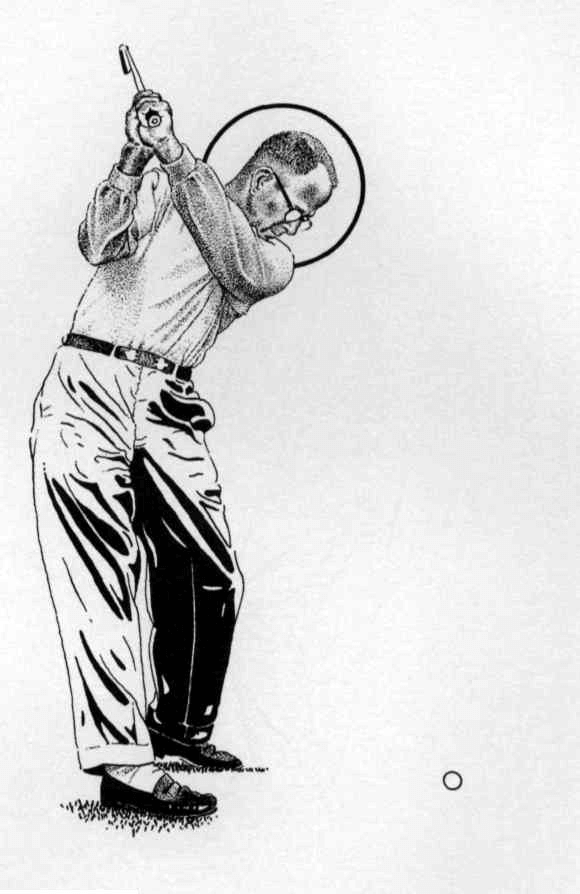Shanking is one of the worst swing shots in golf. A shank occurs when the golf ball is hit by the hosel of the club instead of the clubface. The hosel is the socket in the head of the golf club where the shaft is inserted.
Hosel hitting golf ball will cause shank

The shank strikes without warning. It hits good and bad players alike, often in competition when the golfer is under pressure, when his swing might not be in its normal groove.
I doubt that any golfer who has suffered through a siege of shanking can watch someone else shank a shot without pondering a similar fate for himself on his next iron shot.
Fixing a shank should not be a difficult task though. It should only take a few minutes if you make the necessary adjustments in your swing.
However, because the shank produces so much mental anguish, one should not attempt to correct the habit on the course.
To attempt correction during a round of play merely increases the chances of harming other phases of one’s game. It is best to seek a cure while on the practice tee where one can work under a minimum of pressure.
With that said, here is how to never shank a golf ball again:
- Make The Swing More Upright
- Maintain The Suspension Point At The Same Level Throughout The Swing
- Fuller Turn Or Pivot
- Stand Closer To Ball And Accentuate Tilting And Turning The Shoulders
Table of Contents
1. Make The Swing More Upright
A common swing error that causes the shank is that the swing has become too fat. When the club head at the top of the backswing points far to the left of the target, the swing is too flat. The swing arc is thus affected and a shanked shot is the result.
To fix this, you have to make the swing more upright. The proper swing finds the club head moving along a plane that more or less parallels an imaginary line, running from the ball to the suspension point of the swing at the base of the player’s neck. The golfer’s shoulders should not only turn, but also tilt, on the backswing.
An upright swing helps to prevent a shank

2. Maintain The Suspension Point At The Same Level Throughout The Swing
Straightening the body in the pelvic region during the backswing also tends to cause a flattening of the swing. This, in turn, throws the club head out of its proper plane during its course through the ball and produces contact with the neck of the club.
The suspension point at the base of the neck should not move forward or back, or up or down, during the swing. The player should address the ball by bending slightly from the waist with the knees a bit flexed. Neither the knees nor the back should straighten during the backswing.
Often the tendency to lift or straighten the body during the swing results from over crouching at address.
Maintain suspension point

3. Fuller Turn Or Pivot
Looping is a commin error which often results in a shank. It occurs on the backswing when the player moves his head and shoulders forward and to the left so that they are more over the ball.
This also moves his hands and club outside their normal position at the top of the swing so that they too are more over the ball.
This forces the club head to return to the ball from the outside, increasing chances for the ball to be impacted at the hosel instead of the clubface.
This looping tendency will disappear if one takes a slightly fuller turn with his hips and shoulders on the backswing, taking care at the same time not to flatten the swing.
One should feel that his chin remains pointed at the ball, or where the ball was, throughout the downswing and until after the ball is struck.
Take a slight fuller turn

4. Stand Closer To Ball And Accentuate Tilting And Turning The Shoulders
Standing too far from the ball is actually what a shank is. Once a golfer understands the principle of a shanked shot, there is a tendency to stand farther away from the ball at the address. This increases the problem because the swing becomes even flatter.
By lowering the left shoulder and raising the right shoulder on the backswing, the resulting downswing follows a more upright plane. The club head then meets the ball squarely at impact.
Stand closer to the ball

Related Post: Why do my golf shots go right?
Final Verdict
Shanking is a horrible shot, more of a disease than a poor shot. It happens when the club is swung too much out in front of you through impact.
The hosel hits the ball, which rockets off to the right. There are four main causes of a shank, but the common factor is that the clubhead is swinging out too far from your body on the downswing.
It is reaching out more than it should. The question is: why?
- You could be standing too close to the ball. Which, of course, is easily corrected.
- You could be getting closer to the ball (leaning in) during your swing. In other words, falling into the shot. The symptom is a feeling of being off-balance toward your toes. Make sure you keep your left shoulder “up” as it turns in the backswing. And keep your head back, away from the ball. Forget any thought you had about keeping your head “down.” That can only make your problem worse.
- You could be swinging your hands and arms on too flat a plane. That puts the club too far behind you on the backswing, too far in front of you on the through swing. Swing the club more up and down with your hands and arms, and keep the club more in front of you going back.
- You could simply be reaching out with your arms on the through swing. Which, again, has a simple fix. Just try to keep your arms close to your body as you swing the club through impact.
So the first step in fixing a shank is analyzing which of these four variations you are prone to. Once you figure out which one you have, work on the correction.



